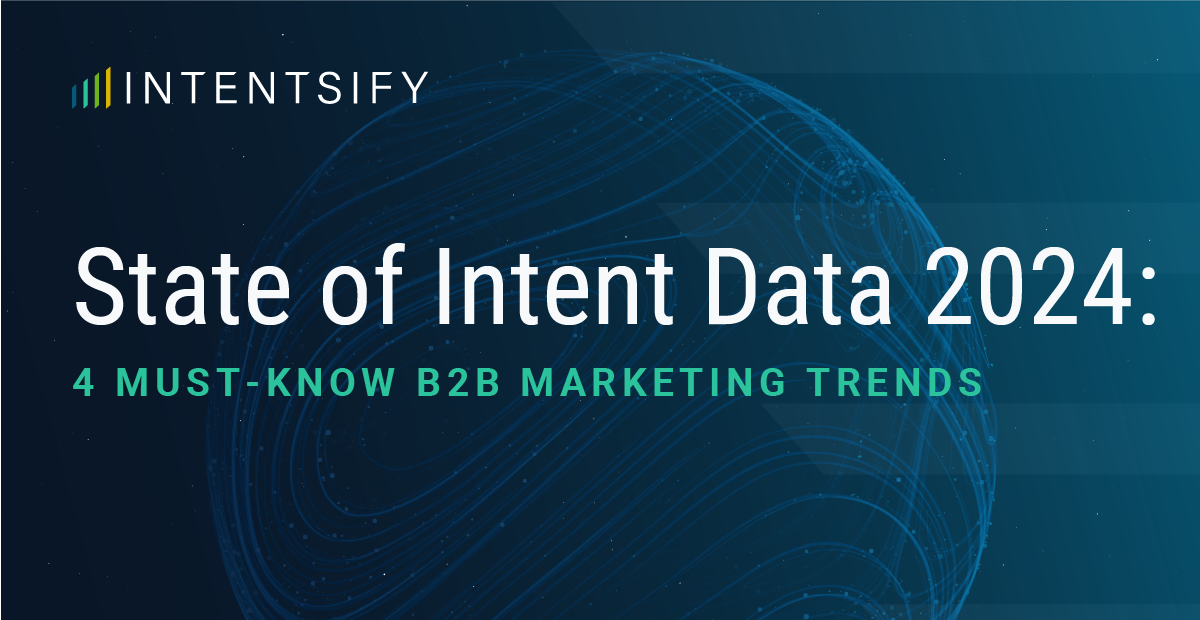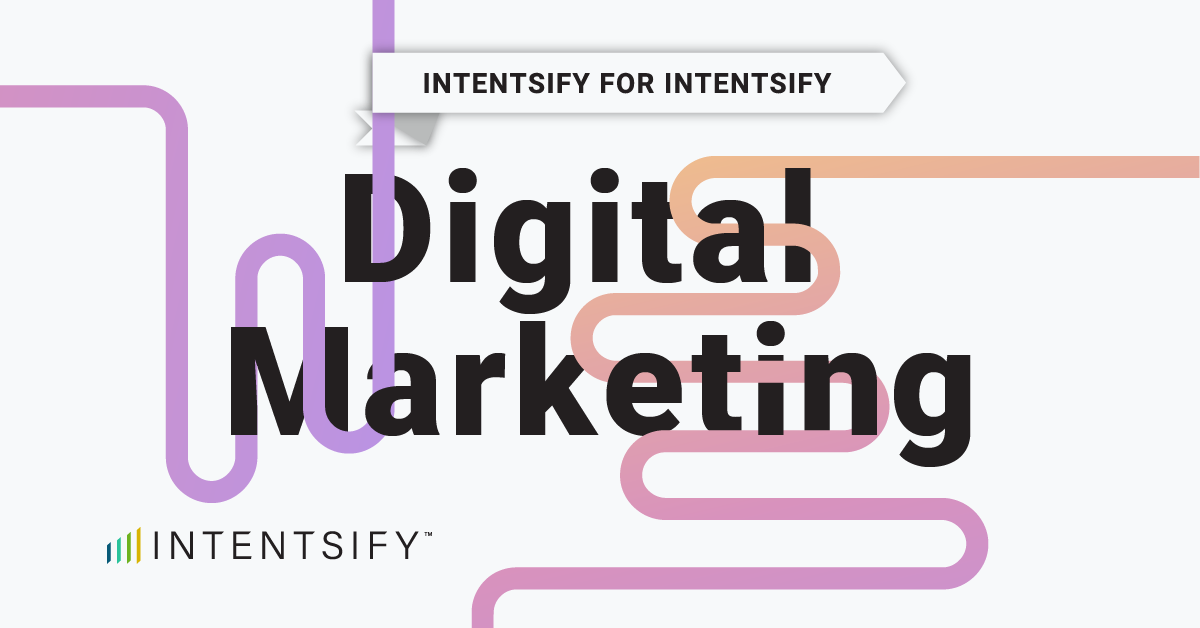Though cookies have been around since 1994, there is a good chance that like Elvis, they will be leaving the building sometime in the next two years. Or, maybe not. Regardless, anyone in digital advertising, marketing or sales must be prepared for any number of scenarios that may or may not occur.
Below is a brief list of potential outcomes and what they mean. The good news is there will be a host of contingent strategies allowing B2B marketers to continue targeting the most relevant companies and people despite which outcome emerges.
And in a way, there’s a lot of good news in that the announced cookie replacements try to fill some of the gaps that an ancient technology (yes, 1994 was a looong time ago) can’t address. Like how about something that can work across ALL channels and not just web browsers.
Where We’re at Today
As for the deprecation of the cookie, we’ve already witnessed round one through legislation (i.e., GDPR and CCPA). There’s now an implicit need to get consent from an individual to drop a cookie on their internet browser and in technical implementations: Apple’s Intelligent Tracking Prevention in Safari (ITP) and Firefox’s Enhanced Tracking Protection (ETP).
Add to those the most controversial addition, Google’s FLoC (Federated Learning of Cohorts), and we have a grandma’s crazy quilt of ad hoc remedies, creating more confusion and undermining any direction toward a unified solution.
In fact, the rollout of Google’s FLoC in the near future has already prompted large, influential digital players like WordPress to announce they will be blocking FLoC’s. Given WordPress represents approximately 41% of the web, this hardly seems like a lasting solution.
So, what will/can happen? Let’s take a look at the possibilities.
Google’s FLoC
Simply put, FLoCs are a proprietary way for Google to define and make available contextual behavioral buckets to help marketers target their audiences. It’s page indexing meets people indexing, with pages representing topics/categories that get associated with specific individuals.
It harkens back to the days of contextual targeting of look-alikes. And there’s nothing wrong with that, as you want the ability to limit your targeting to relevant individuals who actually show interest in the content and sites that can be a proxy for what you sell.
The problem is how granular Google will get as far as how many cohorts they intend to build. This could present issues for B2B marketers who are looking to target fairly esoteric, smaller audiences. For example, if you’re selling hardware/infrastructure, will Google be constructing FLoC’s to meet the need? It’s a very fair question. If the past is any indicator of the future, Google will go where the money is, and that means the big B2C brands that serve many millions of impressions. We shall see.
Another issue is around cross-device targeting. People, for the most part, are multi-device users and the developers of FLoC haven’t yet addressed how this is being tackled. Suffice it to say, we’re in a current state of confusion. Hopefully, it’ll all get ironed out before the sunsetting of the cookie.
The TradeDesk’s Unified ID
180 degrees from Google, we have The TradeDesk’s (TTD) Unified ID, an open-source identity solution that’s interoperable across multiple platforms. It’s intended to be a more privacy-focused cookie alternative that addresses advertisers’ needs while doing more to ensure anonymity and privacy.
TTD’s Unified ID 2.0 is also garnering a lot of support across the landscape. Companies like Index Exchange, Magnite, PubMatic, OpenX, SpotX, Criteo, LiveRamp and Neustar are all on board. Agency networks like Publicis have jumped in as well. And large publishers and streamers like the Washington Post and Roku have also said yes to UID 2.0.
The base concept for the UID 2.0 is that it affords complete anonymity with no way of reverse engineering it (like you can with cookies) to reveal a person’s identity. So, no privacy violations, but pretty much the same process and methodology going forward. You’ll still be able to identify behaviors at the individual level and target accordingly. Whereas, with Google FLoCs, you lose the ability to decide how many individuals you can and should target, the UID 2.0 gives you the precision you use today.
Legitimate and Legal Third-Party Digital Identity Graphs (DIGs)
Companies in the digital identity business (known as DIG’s) will also be providing cross-channel/omnichannel targeting solutions. Companies like LiveRamp and Lotame (among many others) will continue to abide by the strict privacy and security procedures demanded by their Fortune 1000 clients. At the same time, they’ll act as legitimate interlocutors between brands and the digital advertising and email universes.
The key here is the cross-channel piece, where Google has yet to weigh in on how one would/could target FLoCs in a cross-channel environment.
B2B Publishers
One of, if not the, most important constituencies in the B2B world, the publishers, will have a hefty say in what will transpire as well. Given the importance of CONTEXTUAL advertising, marketers are going to want to know how the publishers will interact in an eco-system that will most likely require them to co-exist with all the above.
First-Party Data
Hopefully, all this confusion and all of these options will make marketers see how valuable/critical their own 1st-party data is. It should spur a more concerted effort to try and resolve a lot more accounts that come to your own site. Further, it should put an emphasis on getting your own house in order to rely less on what will become a lot more 3rd-party solutions.
Resolving more accounts, cleaning up and adding quality to your CRM, and becoming more adept at site personalization will only increase the odds of moving more accounts down the sales funnel.
Final Thoughts
In conclusion, we’re in the early stages of the next generation of targeting solutions. The most important takeaway—it’s in ALL parties’ interest to get it right. This means allowing for precise targeting, granular reporting and an adherence to privacy. Remember, from a B2B perspective:
- Use of intent data is about being able to score accounts by aggregating behaviors of many people
- In this scenario, the individual is a lot less important than the group of people who will represent REAL opportunity at the ACCOUNT-level
- Maintaining an ability to target anonymized individuals will allow us all to home in on the addressable audience inside an account
- Anything less would be setting digital advertising back many years—so maintaining privacy while allowing precision will be a key function of whatever emerges
- There will be MANY solutions and you’ll wind up using a few of these—no one solution will be enough to cover your needs from a marketing/sales perspective
- The marketplace will coalesce around the simplest and best ways create win-wins for both marketers and B2B consumers
We’ll stay on top of these developments as they relate to both the debate and the solution set. Moreover, we’ll keep you informed as we move closer to the intended sunset of the 3rd-party cookie, which may happen sometime in 2022…or not.
About the Guest Contributor
Charlie Tarzian is a recognized industry expert in marketing technology and big data discovery and analysis. He founded the intent data company The Big Willow in 2012 and served as its CEO before its 2018 acquisition by Aberdeen, where he then served as Chief Innovation Officer. During the two decades before launching The Big Willow, Charlie held various C-level positions—including CTO, CSO, and CEO—at several marketing and technology companies, where his experiences led him to pioneer new methods of discerning buyer intent.






